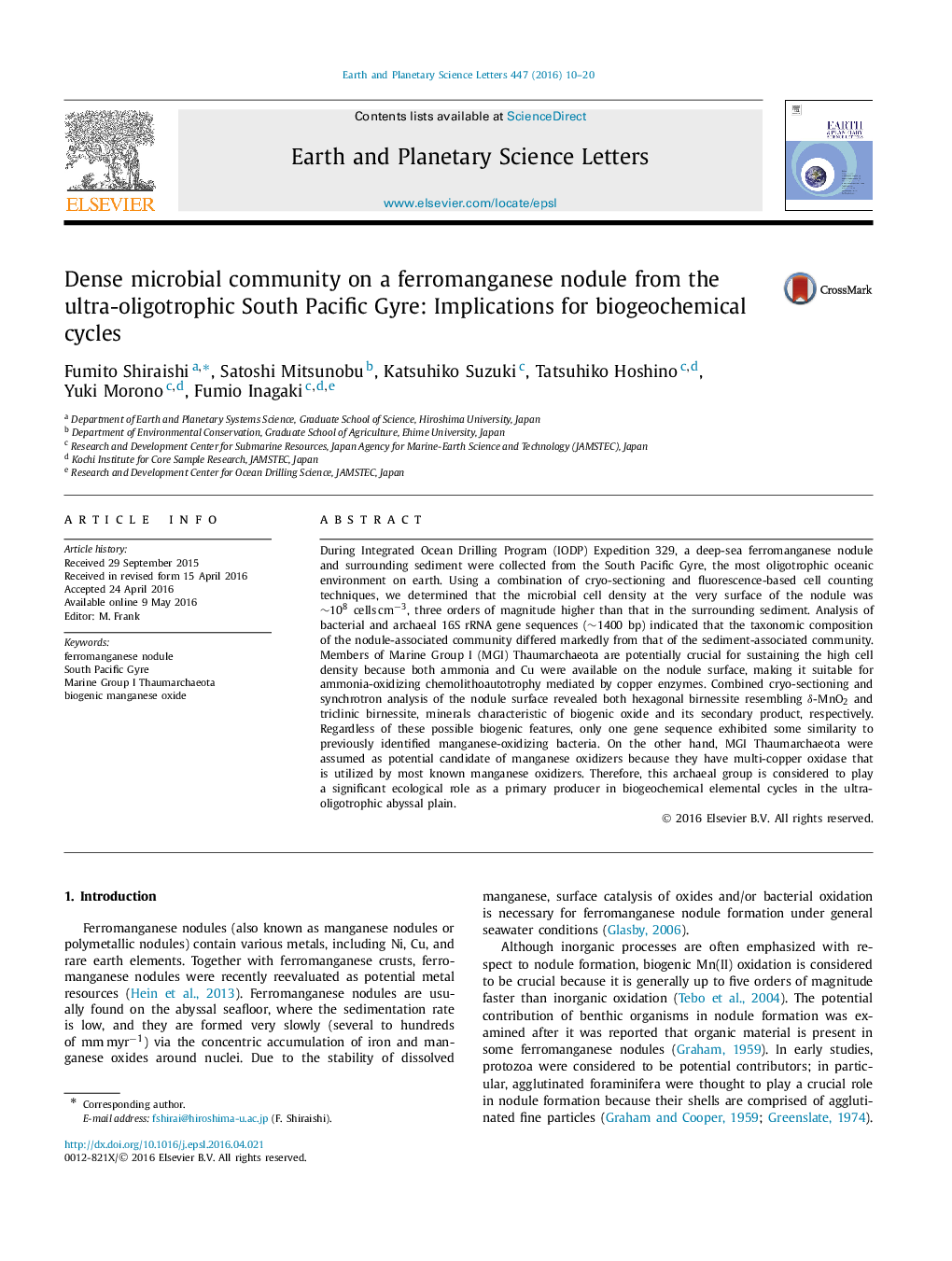| کد مقاله | کد نشریه | سال انتشار | مقاله انگلیسی | نسخه تمام متن |
|---|---|---|---|---|
| 6427456 | 1634709 | 2016 | 11 صفحه PDF | دانلود رایگان |
- Microbial abundance was high on the ferromanganese nodule surface.
- Manganese oxide revealed potential biogenic features.
- Thaumarchaeota may play key roles in biogeochemical cycles in nodules.
During Integrated Ocean Drilling Program (IODP) Expedition 329, a deep-sea ferromanganese nodule and surrounding sediment were collected from the South Pacific Gyre, the most oligotrophic oceanic environment on earth. Using a combination of cryo-sectioning and fluorescence-based cell counting techniques, we determined that the microbial cell density at the very surface of the nodule was â¼108 cellsâcmâ3, three orders of magnitude higher than that in the surrounding sediment. Analysis of bacterial and archaeal 16S rRNA gene sequences (â¼1400 bp) indicated that the taxonomic composition of the nodule-associated community differed markedly from that of the sediment-associated community. Members of Marine Group I (MGI) Thaumarchaeota are potentially crucial for sustaining the high cell density because both ammonia and Cu were available on the nodule surface, making it suitable for ammonia-oxidizing chemolithoautotrophy mediated by copper enzymes. Combined cryo-sectioning and synchrotron analysis of the nodule surface revealed both hexagonal birnessite resembling δ-MnO2 and triclinic birnessite, minerals characteristic of biogenic oxide and its secondary product, respectively. Regardless of these possible biogenic features, only one gene sequence exhibited some similarity to previously identified manganese-oxidizing bacteria. On the other hand, MGI Thaumarchaeota were assumed as potential candidate of manganese oxidizers because they have multi-copper oxidase that is utilized by most known manganese oxidizers. Therefore, this archaeal group is considered to play a significant ecological role as a primary producer in biogeochemical elemental cycles in the ultra-oligotrophic abyssal plain.
Journal: Earth and Planetary Science Letters - Volume 447, 1 August 2016, Pages 10-20
